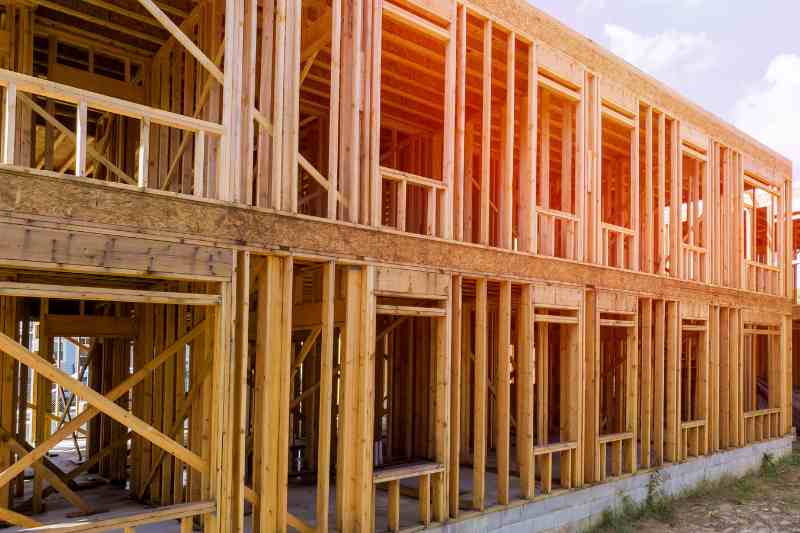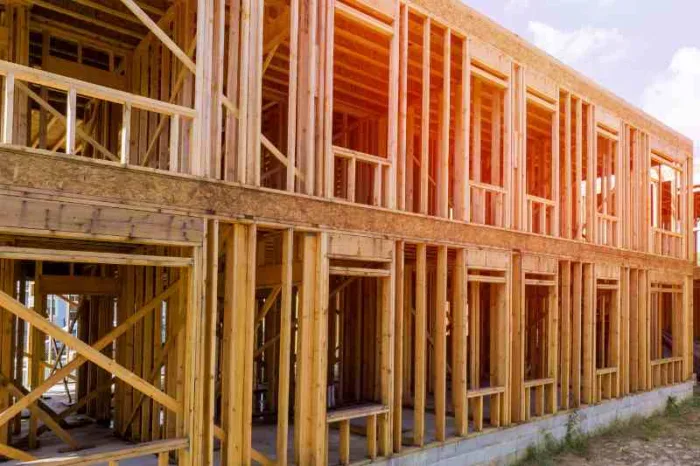Key takeaways
- A multifamily development is a property that can house multiple tenants, where tenants pay rent to live in the building.
- Multifamily properties may be worthwhile investments for developers.
- There are three types of multifamily developments: condos, apartments, and townhouses.
- When developing a multifamily property, you need to secure a great loan, scout out a profitable location, build with amenities and technology in mind, and start marketing before you begin construction.

Disclaimer: This content is for informational purposes only, you should not construe any such information as legal, tax, investment, financial, or other advice. Nothing contained on our site constitutes a solicitation, recommendation, endorsement, or offer by ButterflyMX or any third-party service provider. ButterflyMX is not a financial adviser. You should always seek independent legal, financial, taxation, or other advice from a licensed professional.
Multifamily development may be a lucrative course of action for real estate developers. However, as with developing any kind of property, there are unique challenges that you might face. It’s important to be as knowledgeable as possible about the multifamily industry and the directions you can take your multifamily development in.
In this post, we’ll cover what multifamily development is. Next, we’ll go over different classifications of multifamily developments. Finally, we’ll go over some handy tips before you get started on your multifamily development process.
This post covers:
- What does multifamily mean in construction?
- Is multifamily a good investment?
- What are the types of multifamily developments?
- 4 multifamily development tips
What does multifamily mean in construction?
In construction, a multifamily development is a property that consists of high-density housing and is meant to be rented out for income. Multifamily developments often have property managers who may be different from the owner, depending on how large the property is.
Is multifamily a good investment?
Multifamily properties may be a good investment, as evidenced by how popular they are. They all collect either rent or building fees, which can generate substantial profits over time.
Multifamily properties are generally considered low-risk investments when compared to more risky developments. However, this all depends on the financial strategies that you undertake as a developer. Of course, never borrow more than you can easily pay back in a short amount of time.
What is a good ROI for multifamily properties?
Your initial goal for a positive ROI (return on investment) is between 15% and 20%. However, this can take some time to achieve, no matter the style of your property and its appeal to residents.
What are the types of multifamily developments?
There are generally three types of multifamily developments:
- Apartments. These are buildings where the units are individually rented out.
- Condos. These are units available for purchase within a larger complex (similar to an apartment building). A building manager usually maintains the exterior grounds of the property as well as community spaces within. The owner of each condo unit manages the interior of the unit.
- Townhouses. Like condos, townhouses are available to purchase, but the owner of the property is also responsible for managing the outside of the property. Units often share wall space side by side.
Which multifamily development type is best?
This is a tough question, and the only clear answer depends on what you’re looking for.
Apartments may require more management and care for both residents and their units. Condos, on the other hand, generally only require care for the exterior of the property.
Apartments can possibly earn you more income, but they generally require more work. Meanwhile, condos might be more appropriate for a laid-back management strategy. Further, affordable housing property managers must handle HUD concerns and area median income.
Keep in mind: The only thing that ultimately makes an apartment or condo/townhouse easier to manage than the other is the residents themselves.
What are some multifamily development architecture styles?
Whether you’re aiming for a luxury multifamily development or affordable housing, your property will fall under one of several multifamily housing architecture categories.
There are:
- Low-rise buildings. These are typically one- or two-story buildings.
- Mid-rise buildings. Under this classification, buildings are no taller than five or seven stories.
- High-rise buildings. These properties are seven stories or higher.
4 multifamily development tips
Multifamily development jobs are in consistent demand from developers. But it’s important to ensure that your development plan is as sound as possible to gain a fast and steady ROI.
You should:
- Find the best loan
- Scout out the perfect location
- Build with amenities in mind
- Start marketing as soon as possible
1. Find the best loan
The loan you use to finance your multifamily property can affect nearly every aspect of your development process.
There are four types of multifamily loans that you can consider:
- Short-term multifamily loans. Also known as bridge loans, they last less than five years and are usually meant for properties that are being flipped (developed and sold quickly).
- Conventional multifamily loans. The most common loan type. This requires a down payment and a set number of years to pay off the loan.
- Government-backed multifamily mortgage. These are loans provided by government agencies. Investors must meet certain criteria to qualify for them. VA loans are a great example of government-backed mortgages.
- Portfolio multifamily loan. Banks and other financial institutions directly provide these apartment loans. They may be most useful for developers with a large portfolio of properties.

2. Scout out the perfect location
Location is everything when it comes to multifamily development. The perfect location will be in close proximity to numerous high-value places, which will create higher demand from prospective residents. This demand means that you can justifiably negotiate to increase the rental rate.
A good location could be near destinations such as:
- Schools
- Parks
- Public transportation
- Grocery stores
- Local amenities (such as movie theaters)
- Parking garages (in cities)
3. Build with amenities in mind
You’ve found your financing, and you’ve scouted your location. Now, you need to be mindful of what will make it stand out.
Amenities will draw residents to your property and give you the edge over any other apartments in your neighborhood.
Amenities that residents love include:
- Pools
- Gyms
- Smart access control systems
- Outdoor spaces
- Rec rooms
- Smart washers/dryers
- Smart thermostats
- Party rooms or private hosting rooms on the property
- Gardens and walking paths
Pro tip: The amenities your residents want will differ based on if the apartment is suburban, urban, or rural. Keep this in mind as you invest in amenities.
Discover the top 5 multifamily design trends:
4. Start marketing as soon as possible
You should start marketing your multifamily development as soon as you pick your location. Post online in as many different communities as you can find. Include a few details about your upcoming property, and be sure to provide an expected completion date.
Next, create a website for your property. After that, be sure to set up a waiting list. Interested prospective residents can sign up for updates on when they can tour the property and/or sign a lease.
Pro tip: Tailor your marketing efforts to the type of building you’re offering. The marketing strategy for a luxury high-rise apartment will look different than the strategy for an affordable garden-style apartment.






